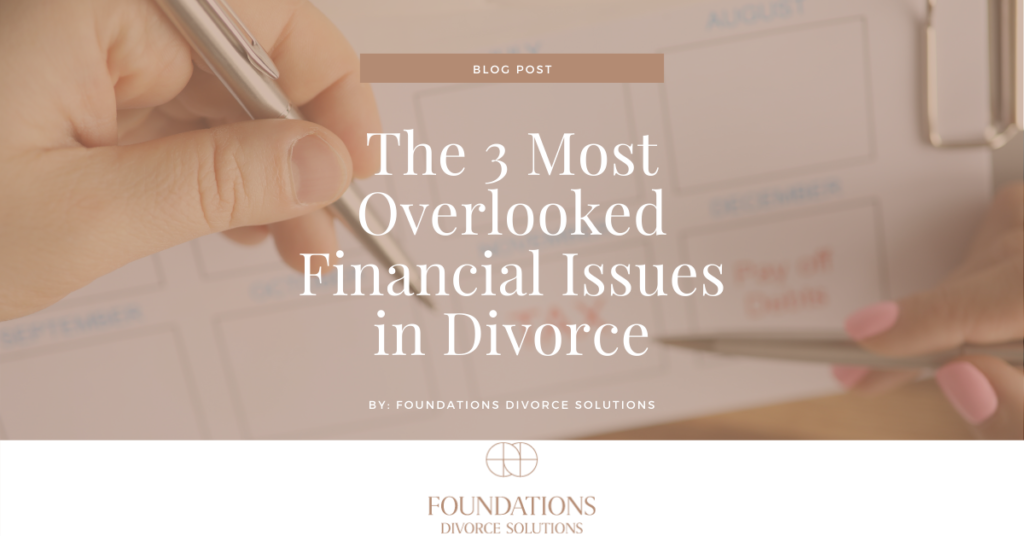Divorce is a huge life event with the ability to really shake up your financial situation because it calls for the total division and separation of shared assets.
Most divorcing couples have at least considered the financial consequences of divorce ahead of filing. Any way you slice it, divorce can be costly and amid the upheaval, details can fall through the cracks. That’s why Foundations Divorce Solutions has put together this quick list of three of the more often overlooked financial issues surrounding divorce.
1) The hidden costs involved in dividing marital assets
Couples making the difficult decision to separate are usually aware that property will be divided, but it’s the subtleties that often slide under the radar. This extends beyond arguments over who gets to keep the good china or that bedroom rug that really tied the room together.
The true cost of separating assets is situationally dependent. If your divorce agreement involves the sale of the marital home, both parties will be transitioning into new living situations. The move from sharing a mortgage to renting a property or purchasing new property usually comes with higher payments when you are flying solo. The situation can become even more financially complex when taking into consideration reverse mortgages and equities; homeowners who are underwater will have a host of other issues to contend with.
Divorce isn’t a one size fits all situation—it’s important to make a realistic assessment of your post-divorce budget and to factor in expenses like an increase in insurance premiums, replacing furniture, and new housing costs.
2) Taxes, taxes, taxes
In terms of big-ticket items, tax considerations are one of the bigger hidden costs of divorce. If you and your spouse aren’t particularly financially savvy, it’s a great idea to work with a financial mediator or accountant who can provide expertise in these matters and guide you through any tax considerations; there are different implications to consider when it comes to specifics like child support and alimony and taxes that need to be factored in when it comes to the sale of any major mutual assets.
Whether you are selling your shared home or dividing up retirement accounts, accurately assessing and addressing any tax-related expenses will help provide you with a better post-divorce financial forecast. If you prepare yourself ahead of time, you can avoid surprises and account for these costs upfront when splitting assets.
It’s important to remember that these things don’t translate in an easy, apples-to-apples manner. For example, a withdrawal of $50,000 from your savings account is different than withdrawing $50,000 from a 401k brokerage account because traditional savings accounts aren’t subject to taxes (taxes have already been paid on the money).
3) It costs more to be single than married
The bare-bones facts are that your earning potential is greater when you are a couple where expenses are usually split—double the income and shared expenses can go a long way to contributing to financial stability. When you transition into a single-income household, you’re going to shoulder the financial weight of the costs that you used to split with your partner.
Multi-car insurance policies, family cellphone plans, shared streaming accounts—you might be on good enough terms with your ex-beau to keep splitting some of the costs but that really depends on your individual situation. Along the line of additional considerations, as a single head of household filer, you will also lose some of the tax perks you used to get when filing jointly.
The path to divorce doesn’t have to lead to financial instability. With a proper assessment of your financials, you can flush out any overlooked costs to create an accurate picture of your post-divorce finances, which will help you secure your post-divorce financial future.




